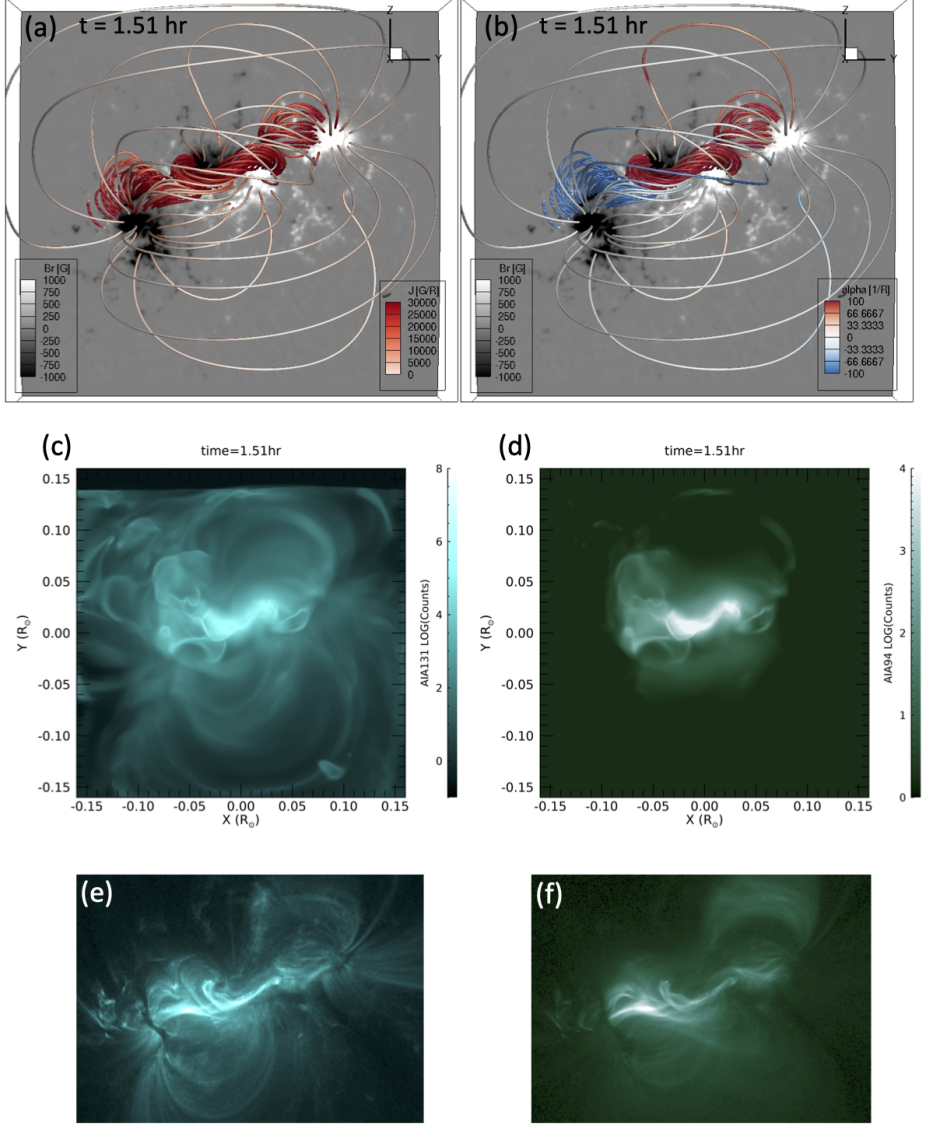
Results from a data-driven MHD simulation of the 2011-02-15 X2.2 flare/CME event from Active Region NOAA 11158, using lower boundary driving condition derived from the vertical magnetic field and vertical electric current measured from the SDO/HMI vector magnetograms. Top panels show the 3D magnetic field just before the onset of the eruption, with the field lines colored in current density (panel (a)) and in twist rate (panel (b)). The middle row panels show the synthetic SDO/AIA 131 angstrom channel image (panel (c)) and synthetic SDO/AIA 94 angstrom channel image (panel (d)). The bottom panels show in comparison the observed SDO/AIA 131 angstrom channel image (panel (e)) and 94 angstrom channel image (panel (f)) at 2011-02-15 01:45 UT, about the time of the onset of the X2.2 flare.
Advances in Space Research: We present a report of recent progress on the topic of understanding solar coronal mass ejection (CME) onset from both modeling and observational viewpoints, as carried out from 2019 to the present by the NASA Living with a Star Focused Science Topic team on “Understanding the Onset of Major Solar Eruptions.” Following the typical Focused Science Topic paradigm, a number of research groups were selected and joined together to tackle this problem. The work being carried out by this team explores the role of topology and of helicity transport in creating an environment favorable to CME eruption and in then providing the energy required for CME onset. The team investigated CME energization and initiation via photospheric shearing, via flux rope formation, and via magnetic flux emergence. This article will highlight recent progress made by six American research groups working in these areas. We do not intend to present an exhaustive review of these topics, but rather summarize the ideas from these research groups regarding ongoing and upcoming challenges to the questions of how, when, and why coronal mass ejections erupt from the sun.